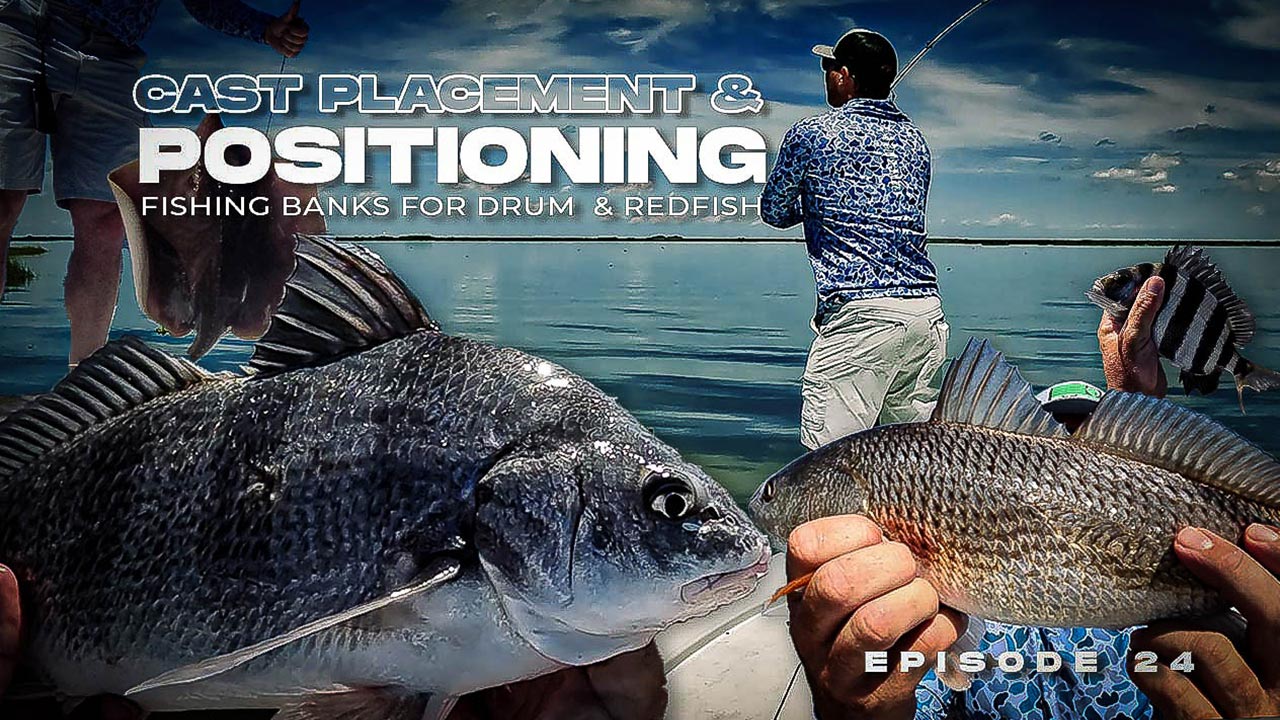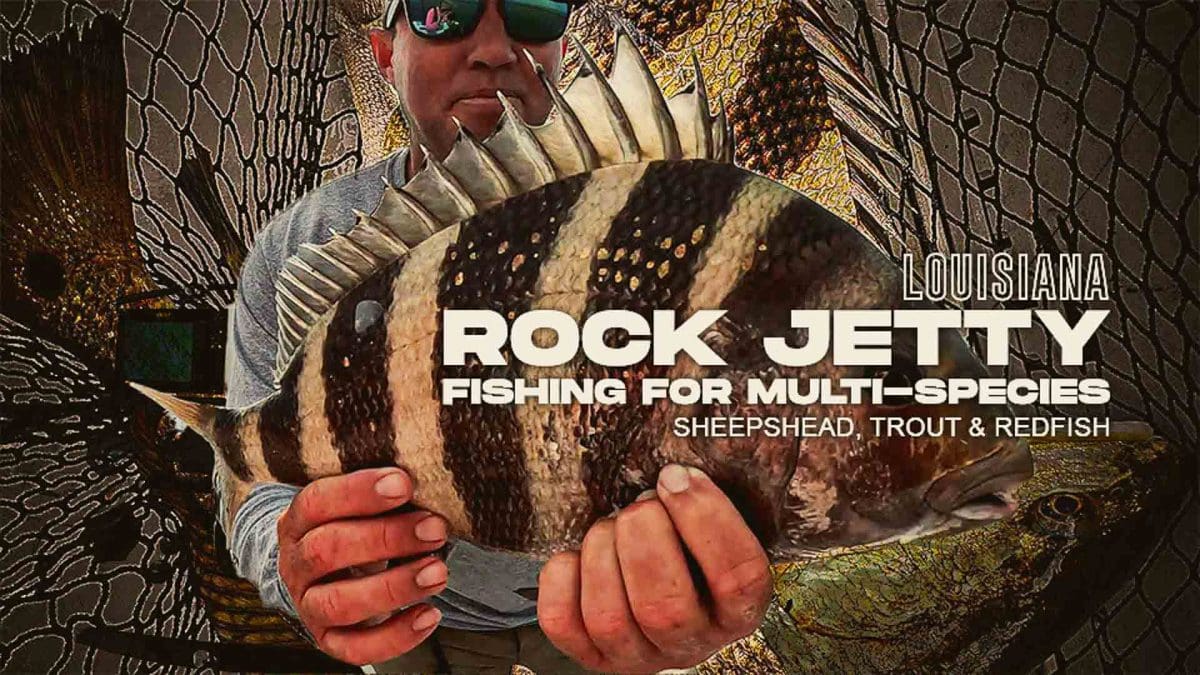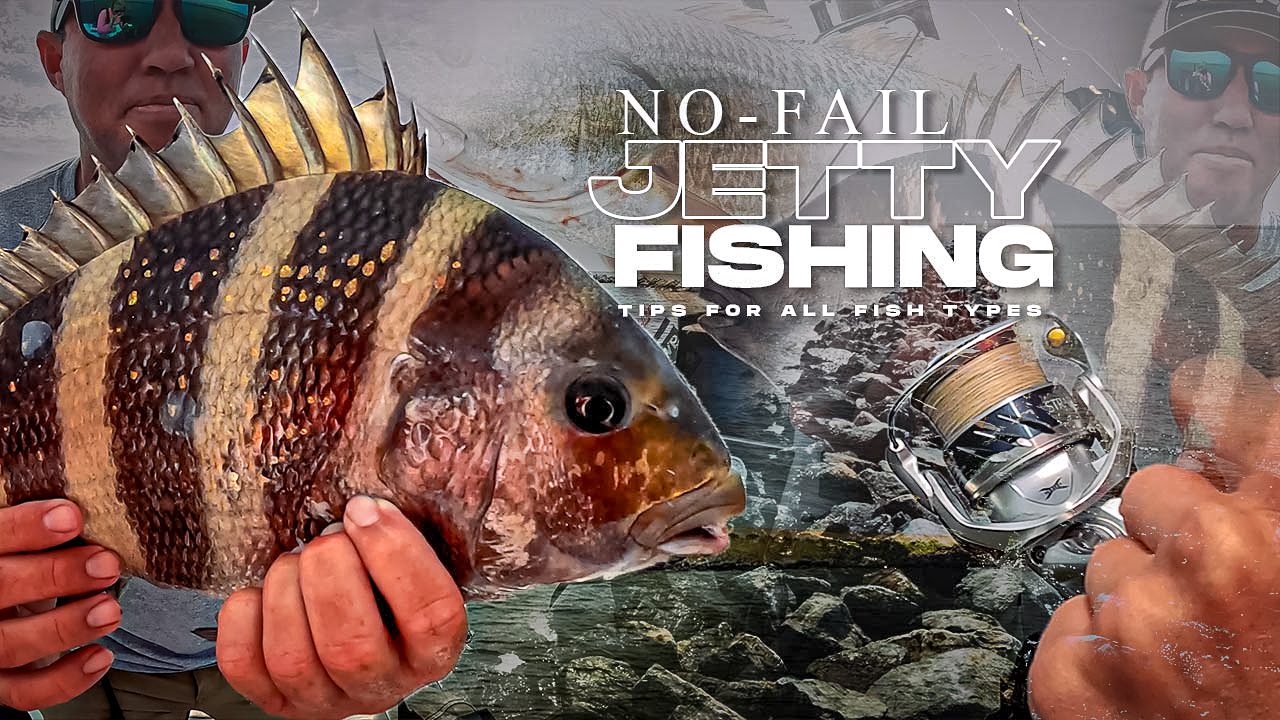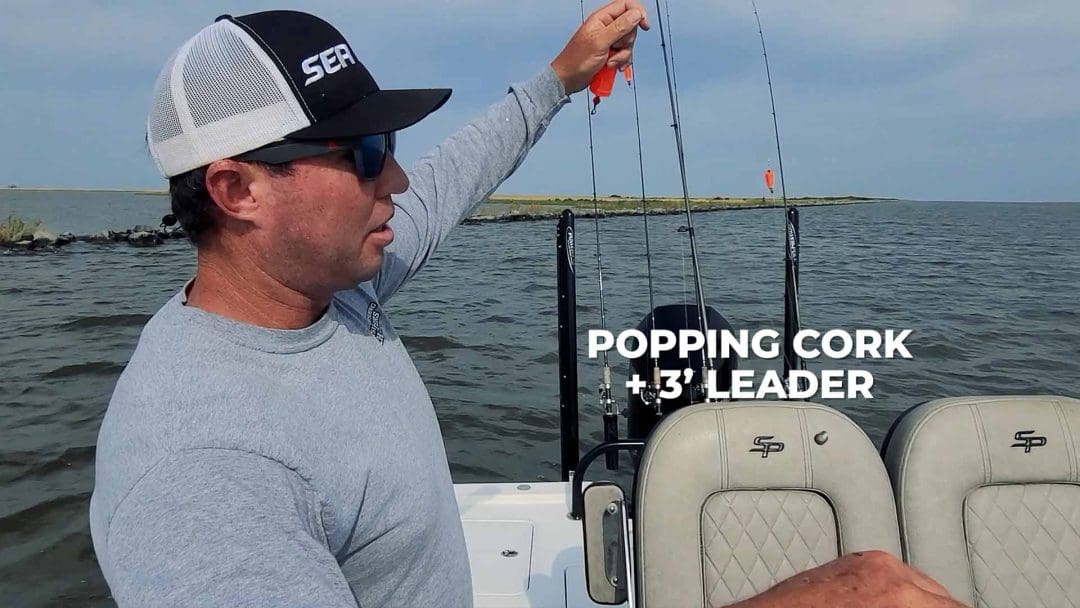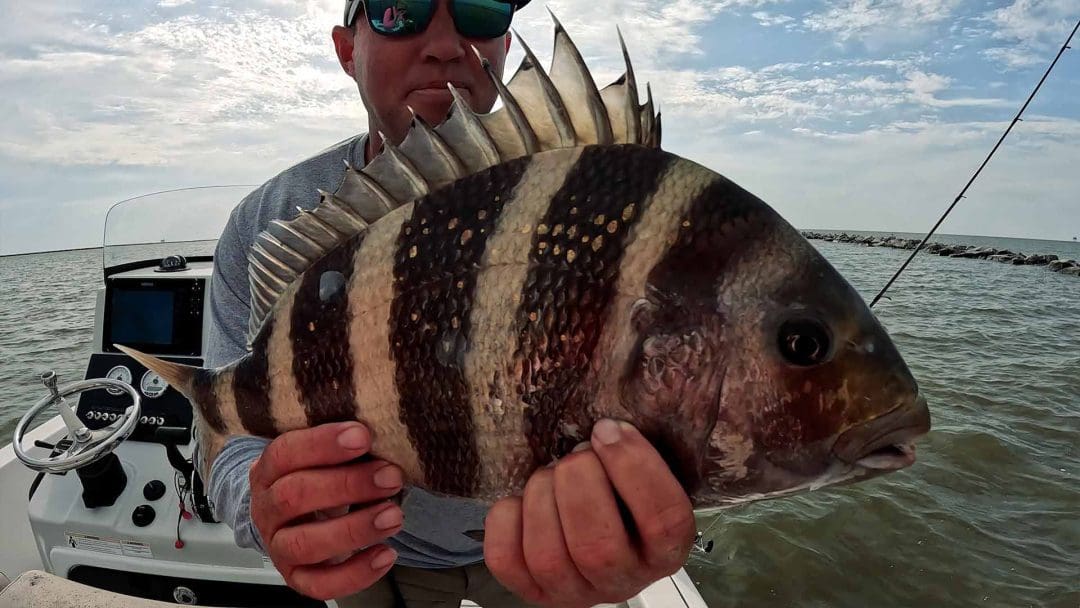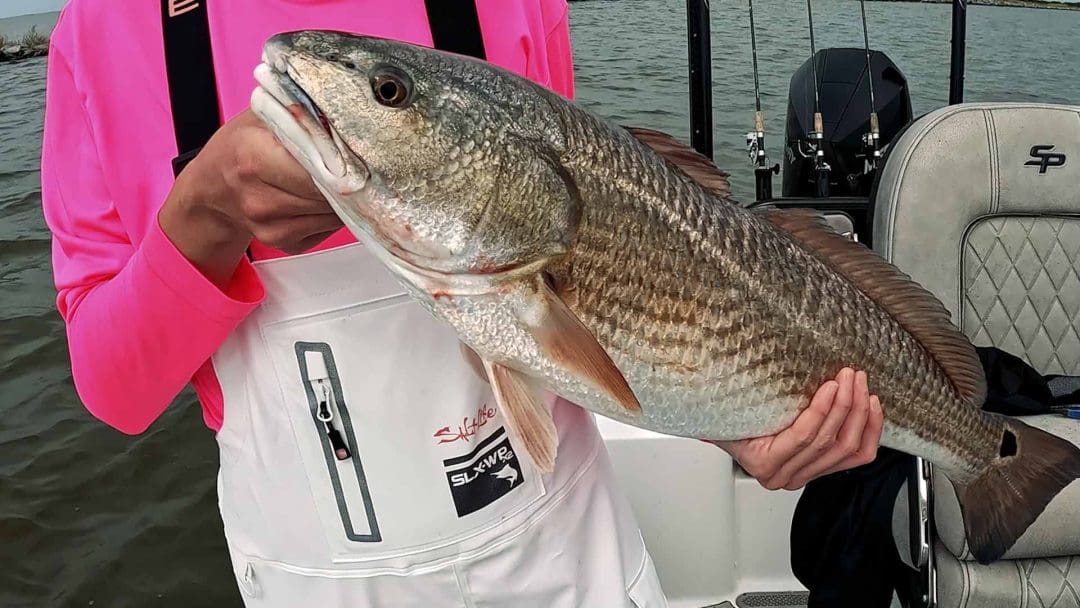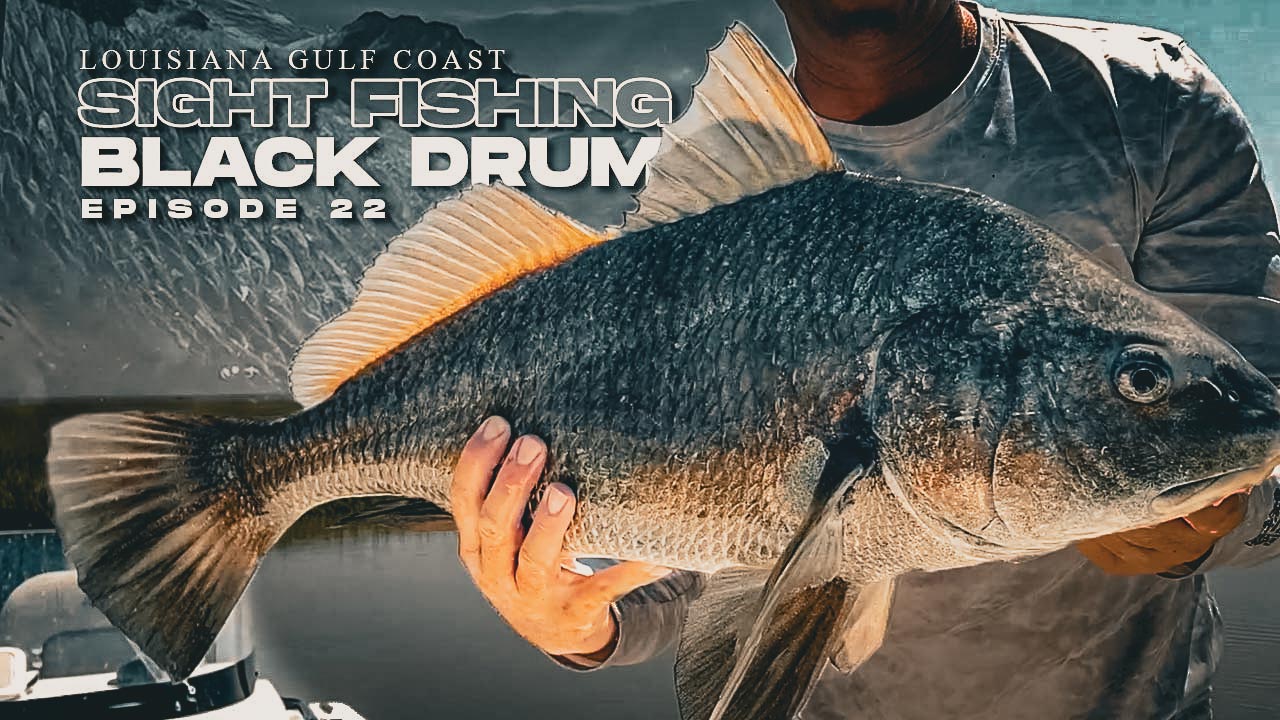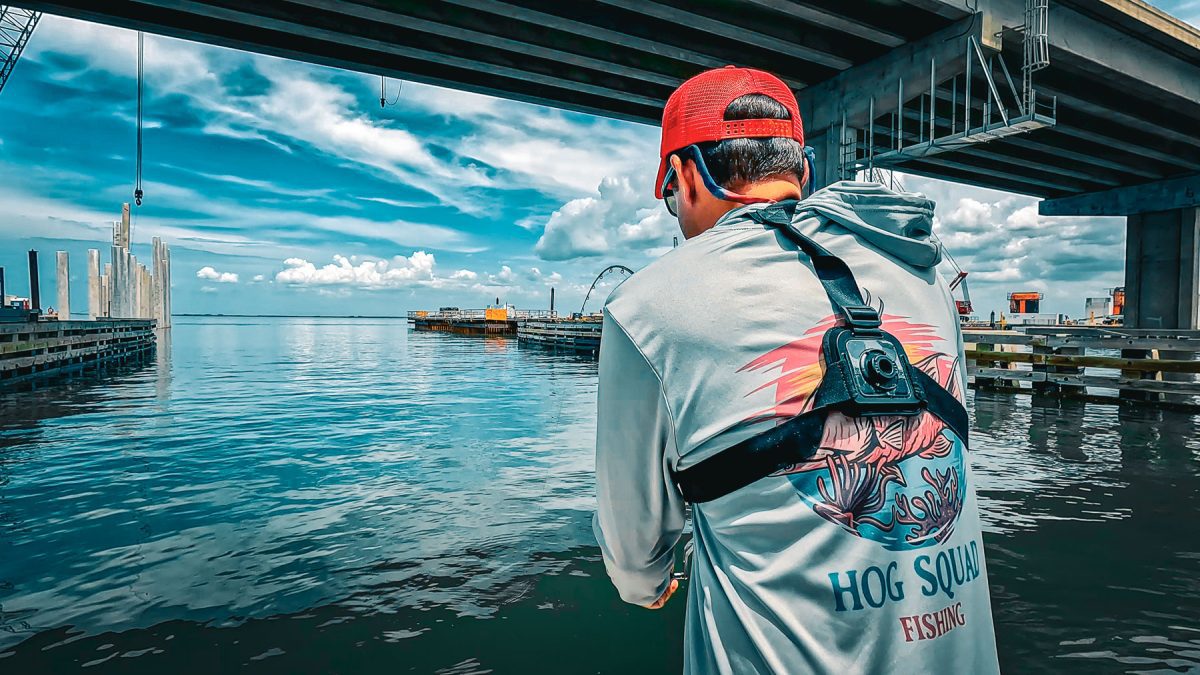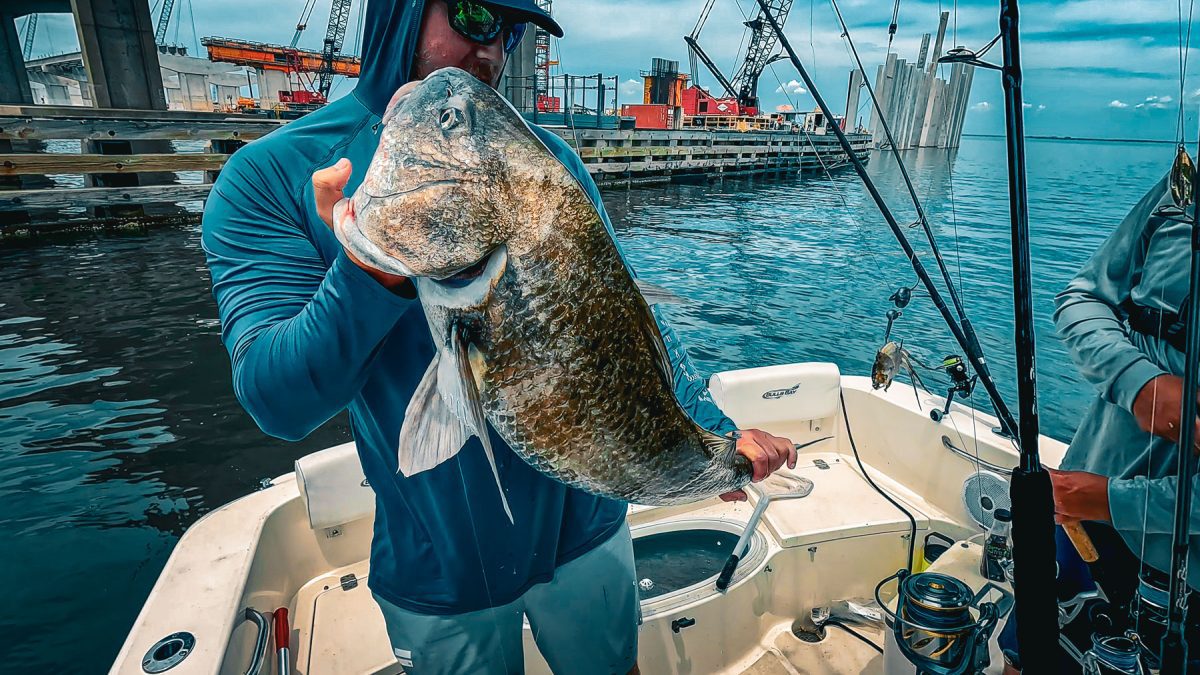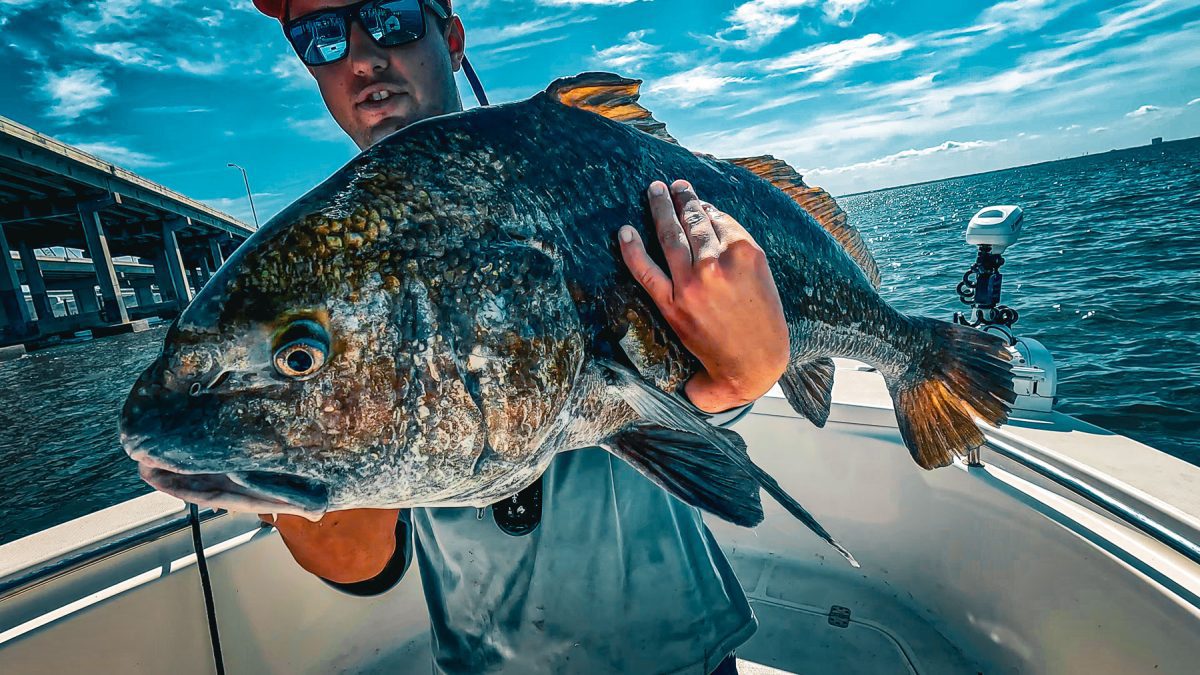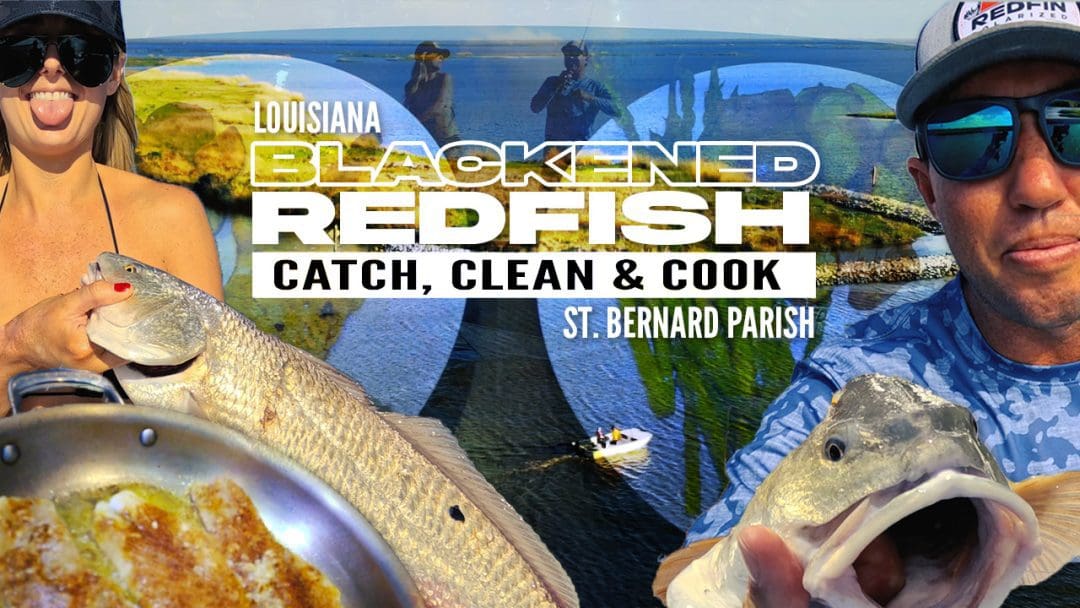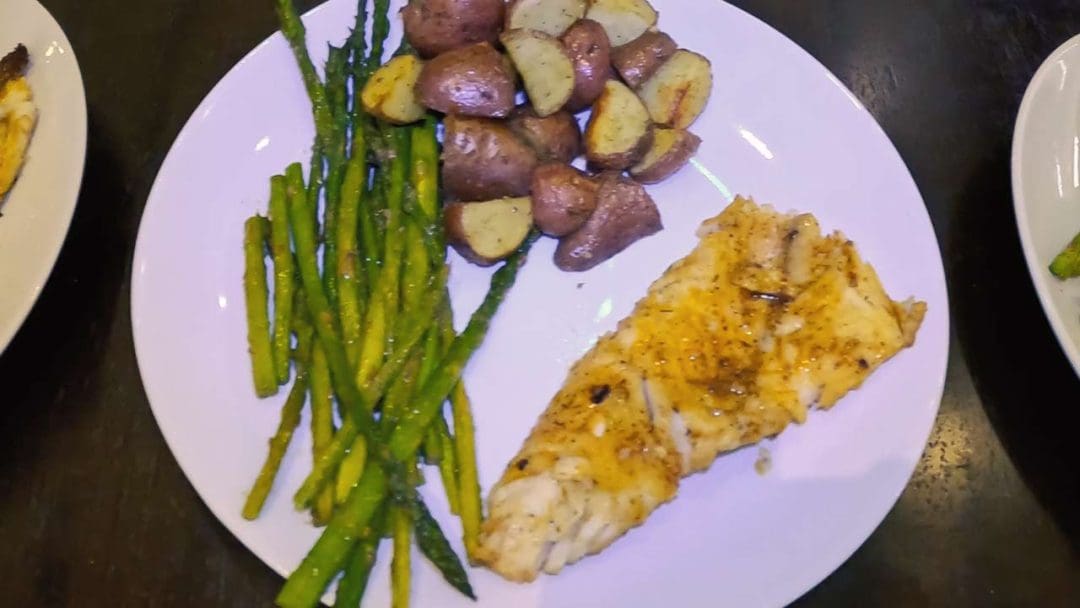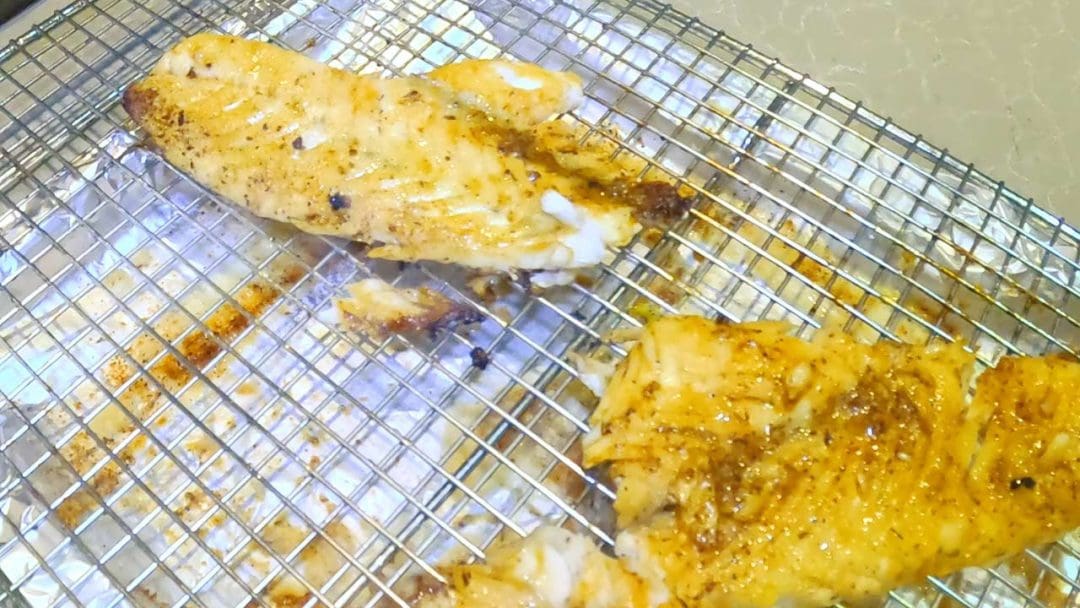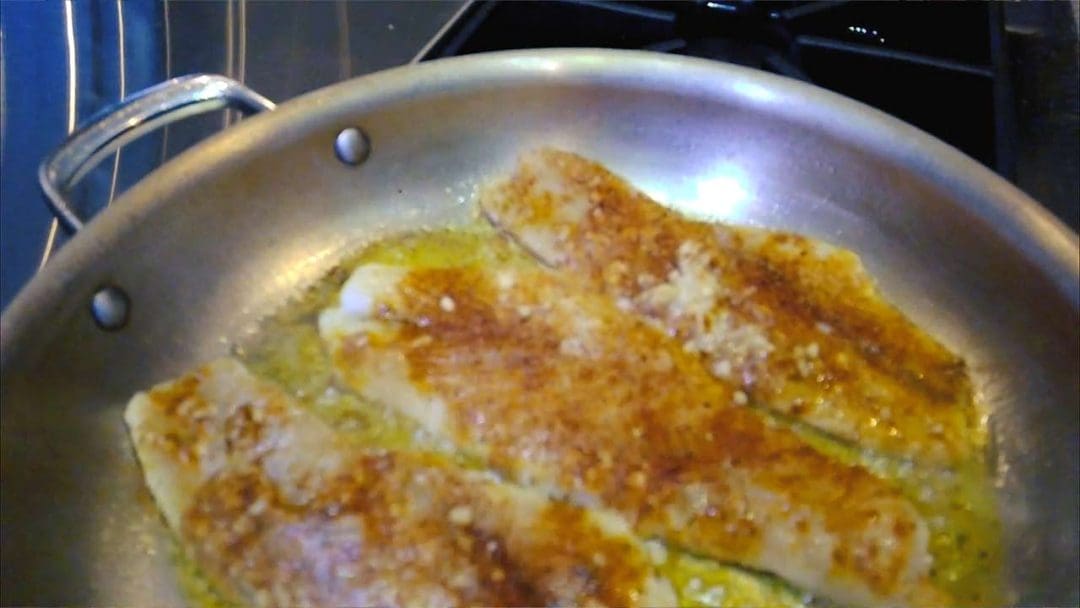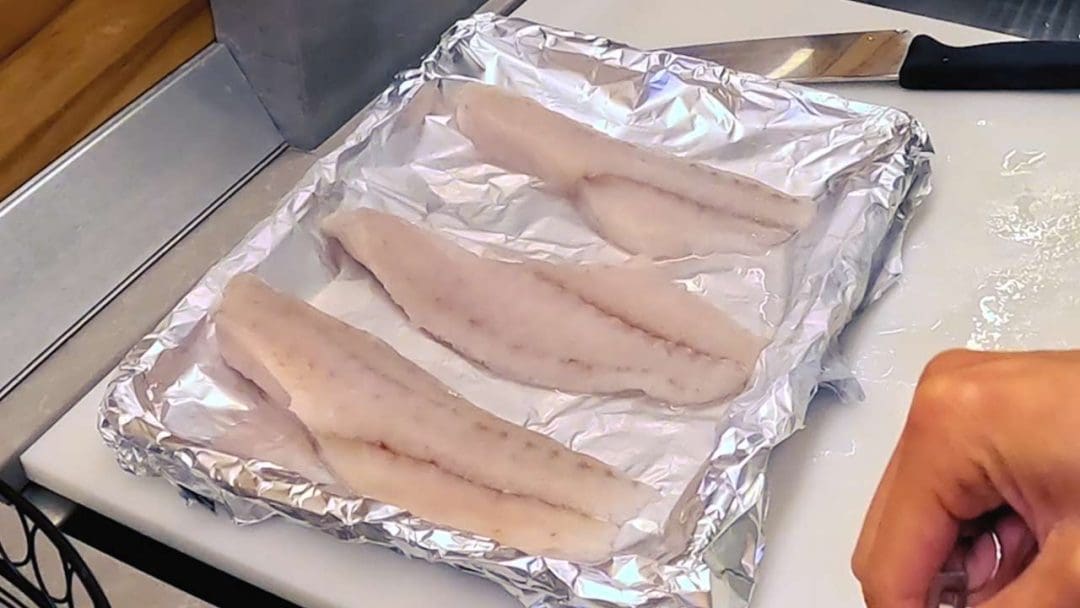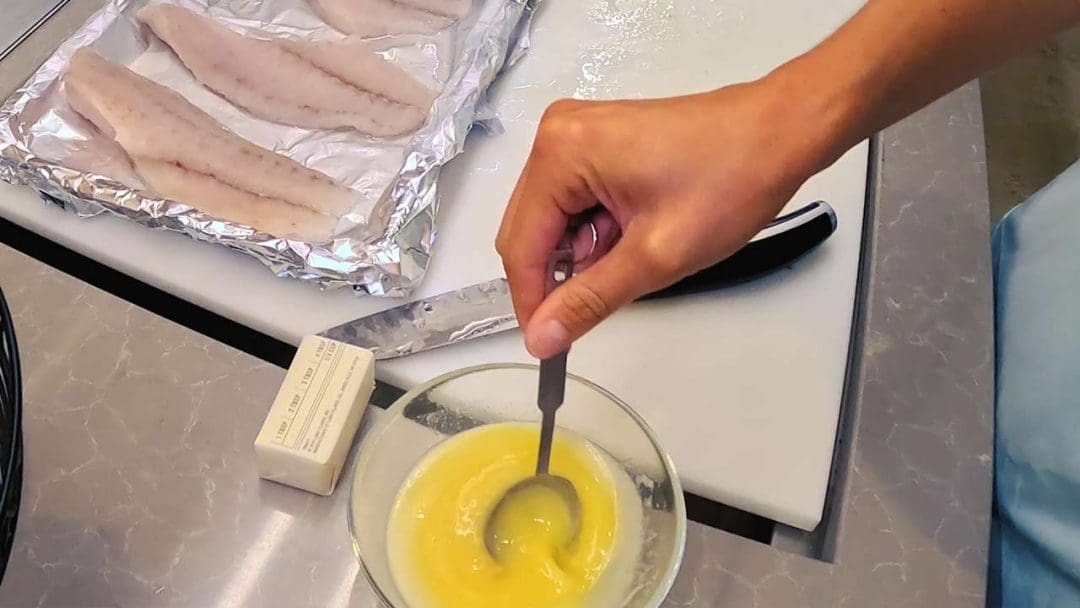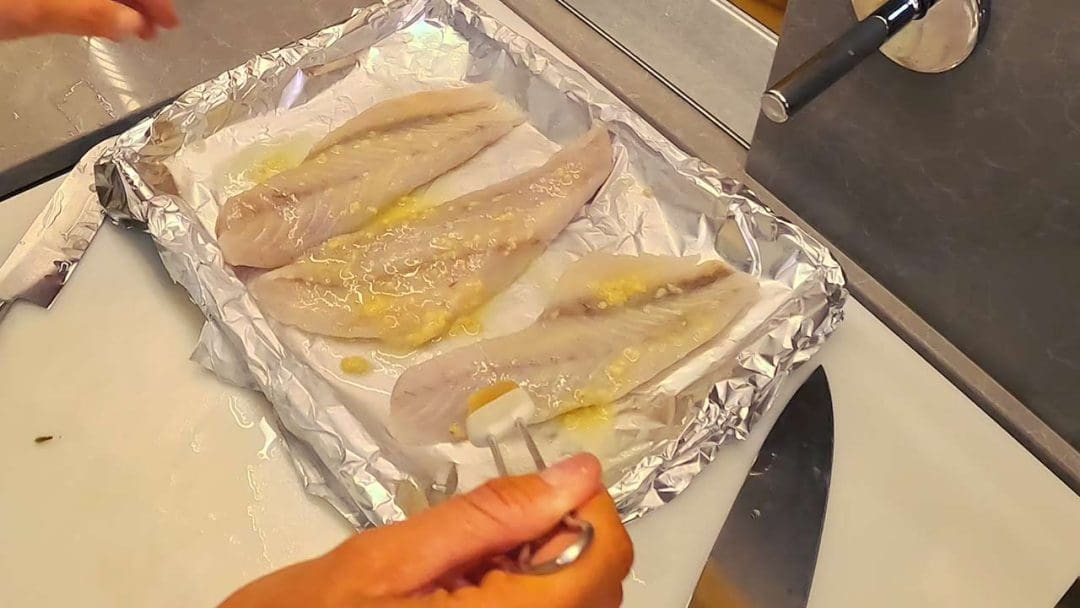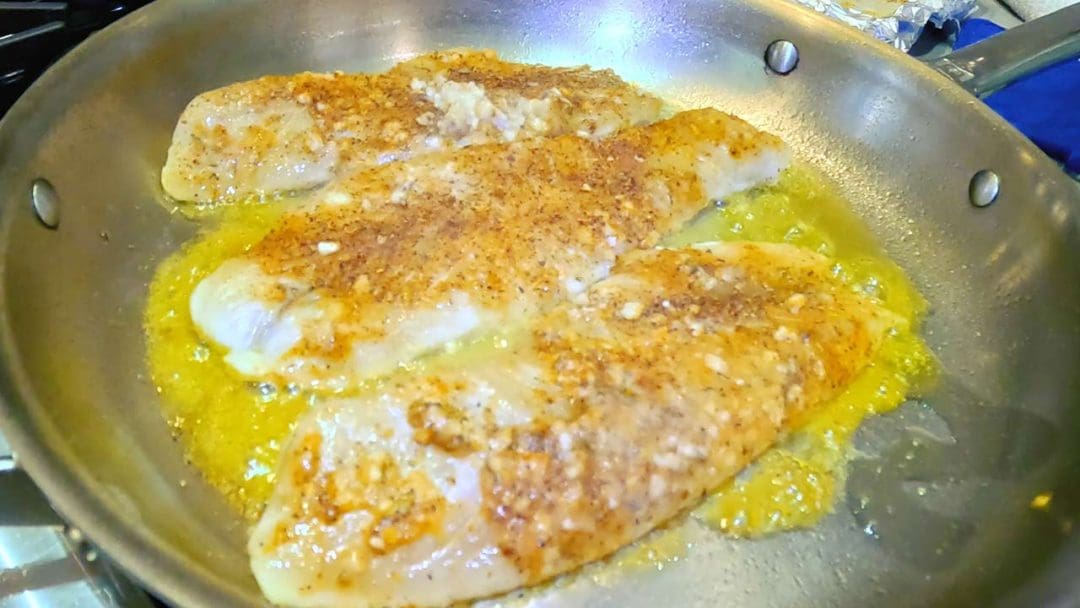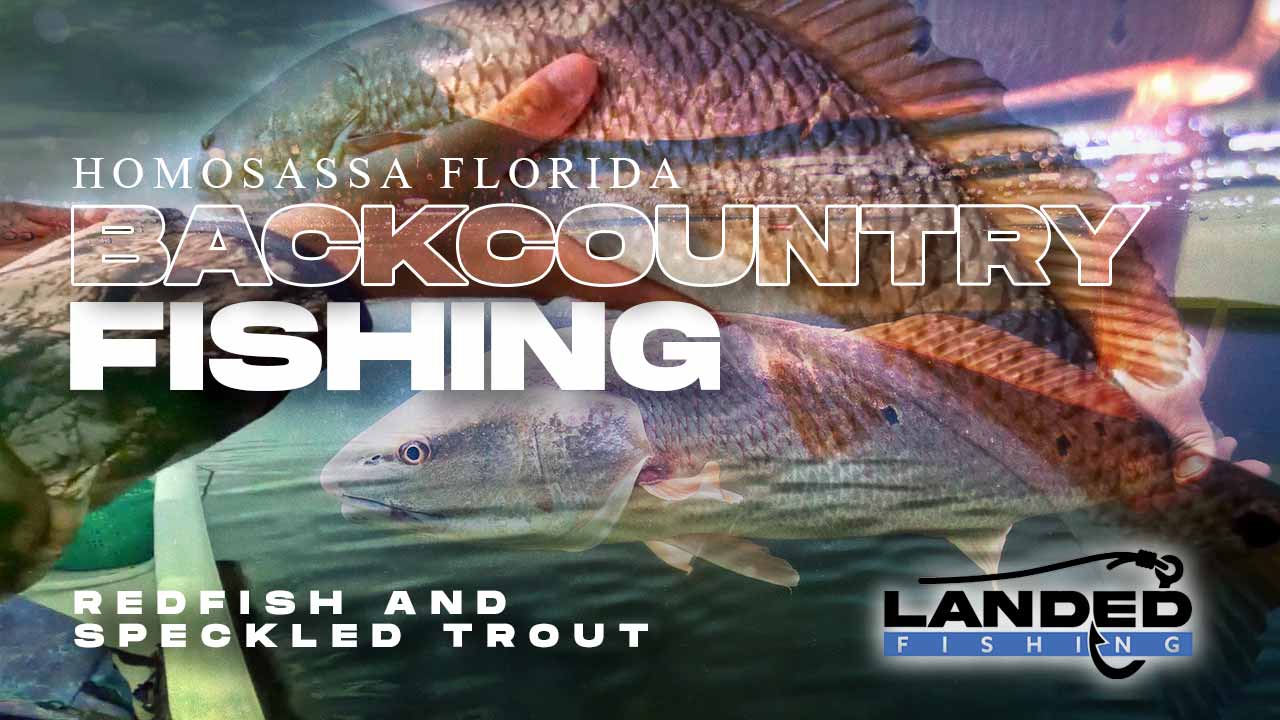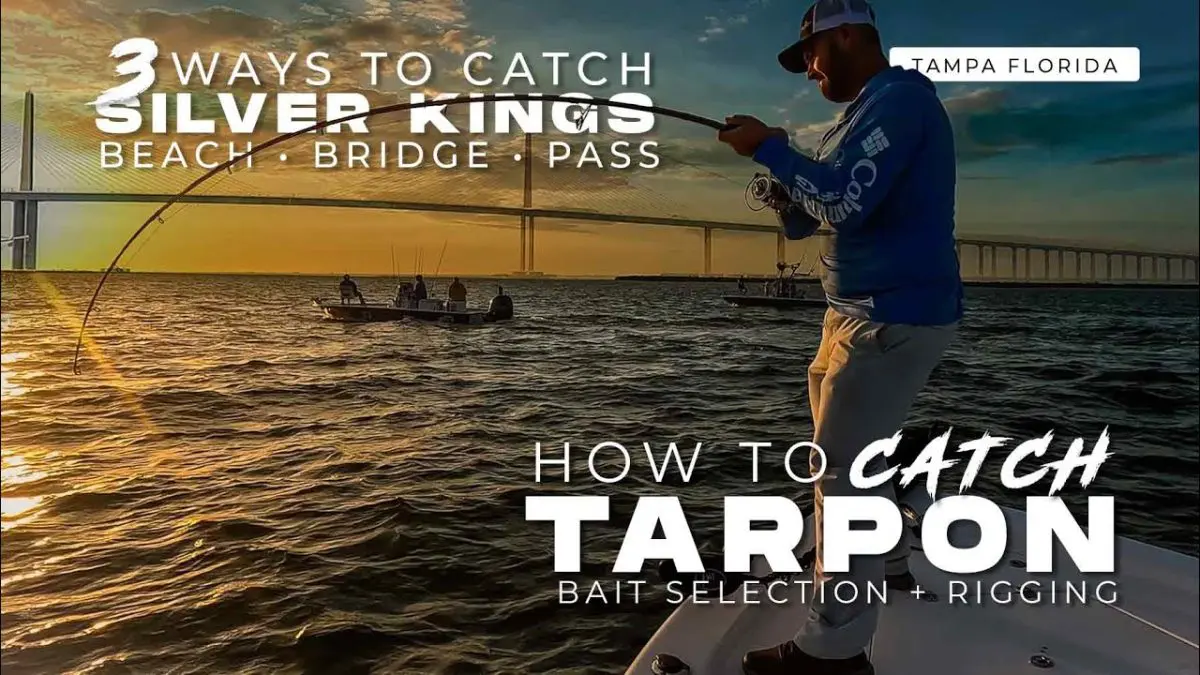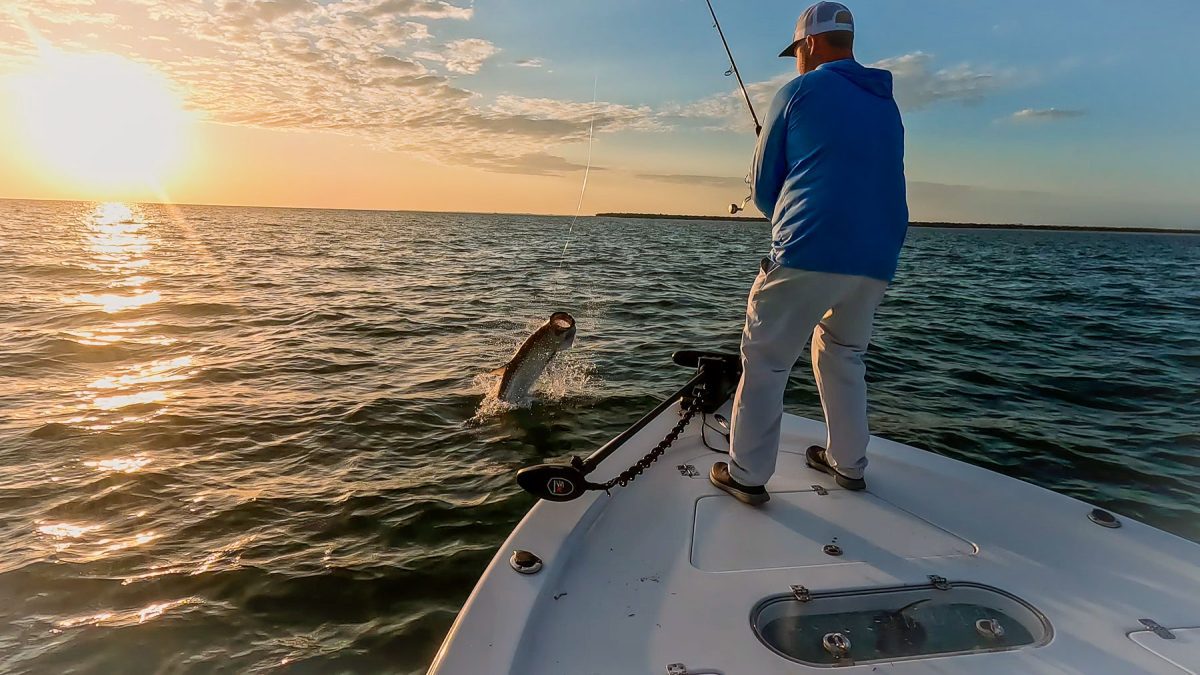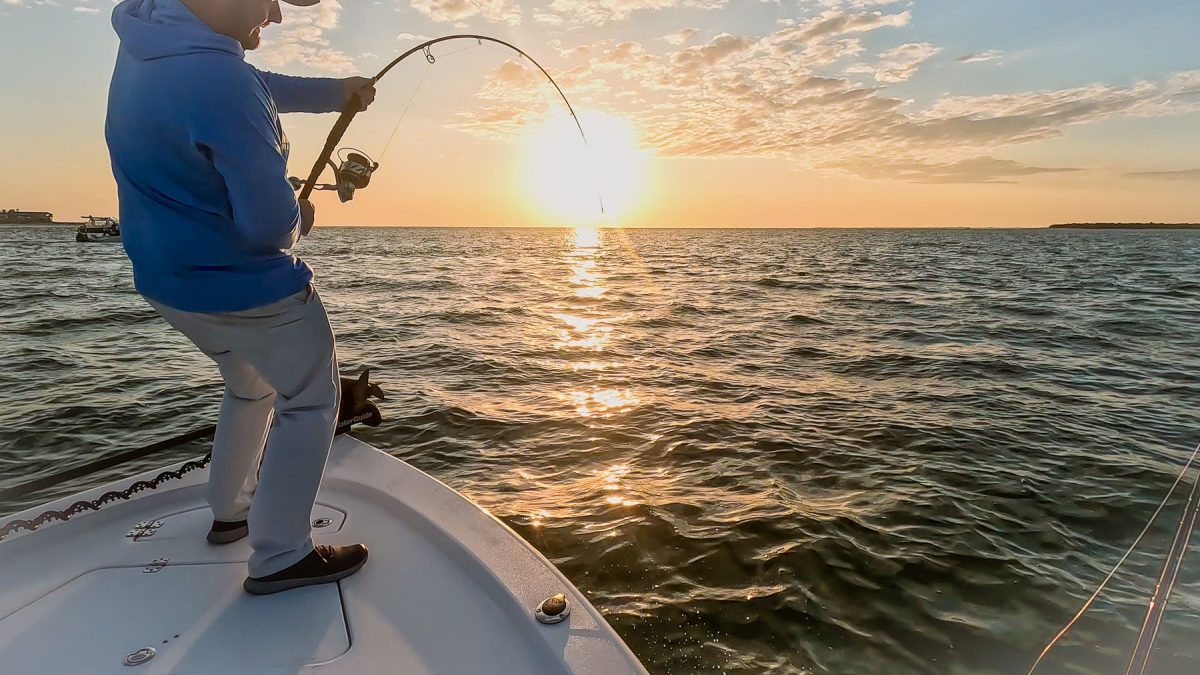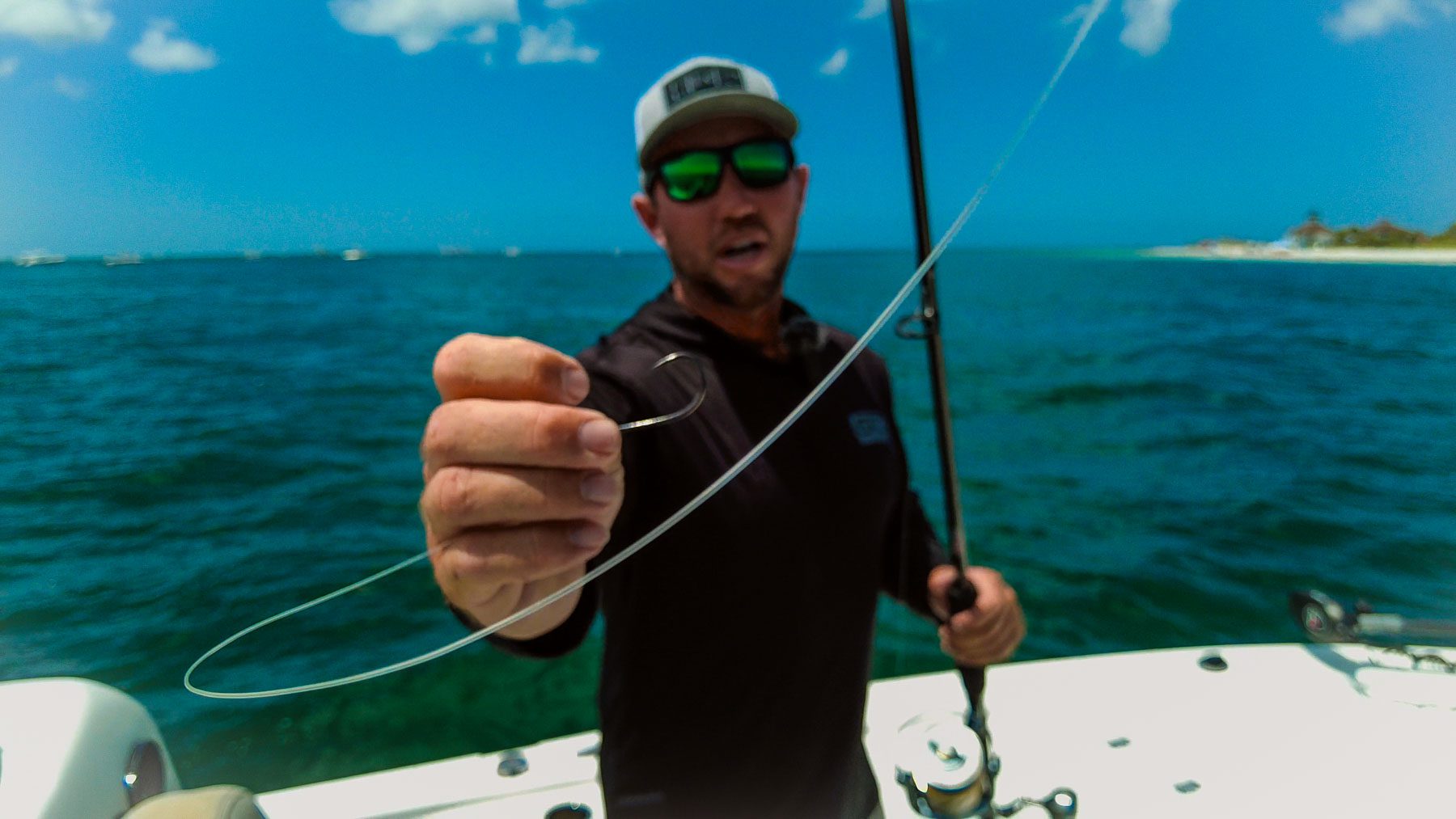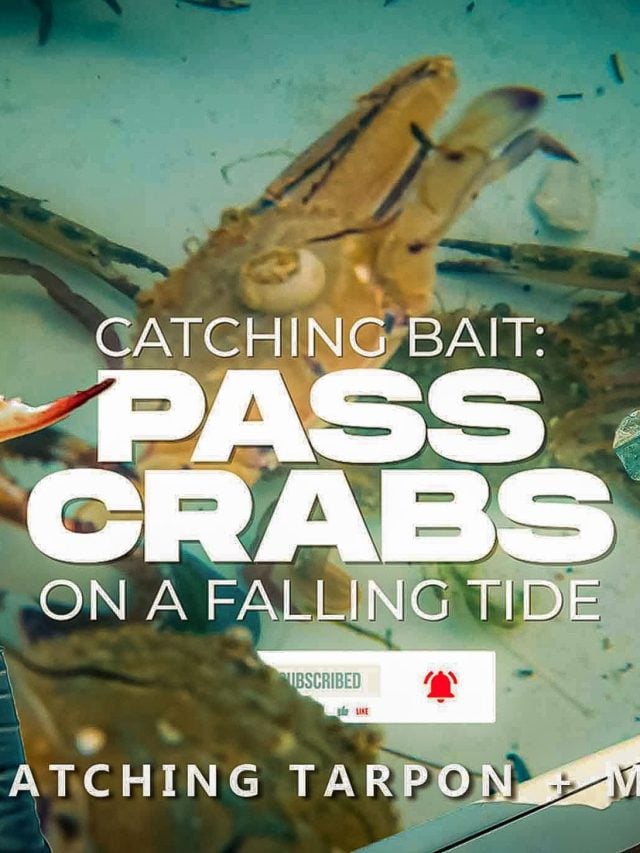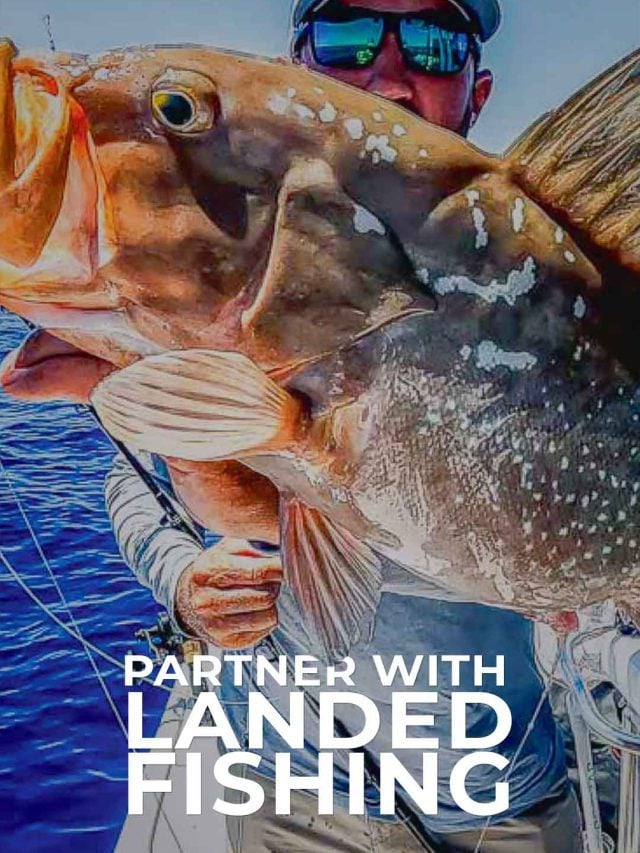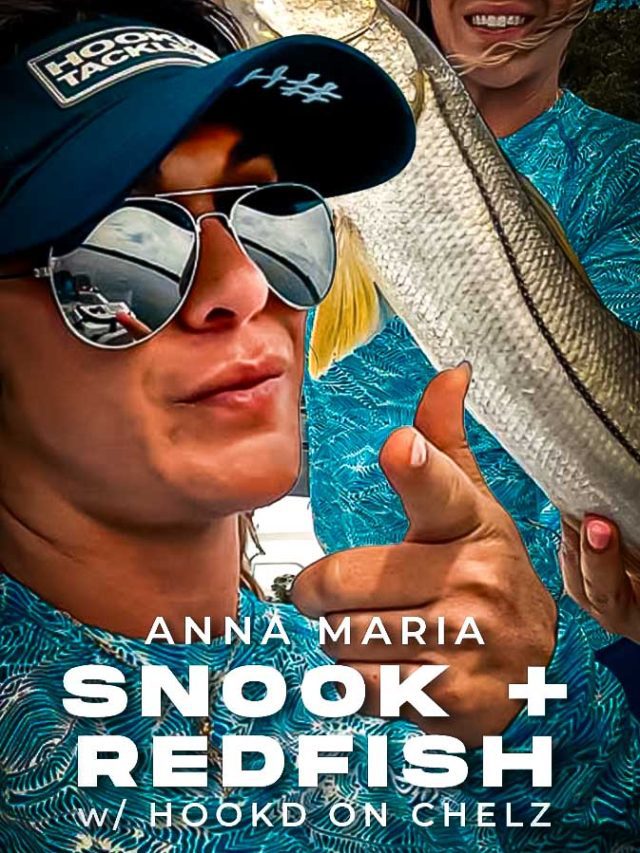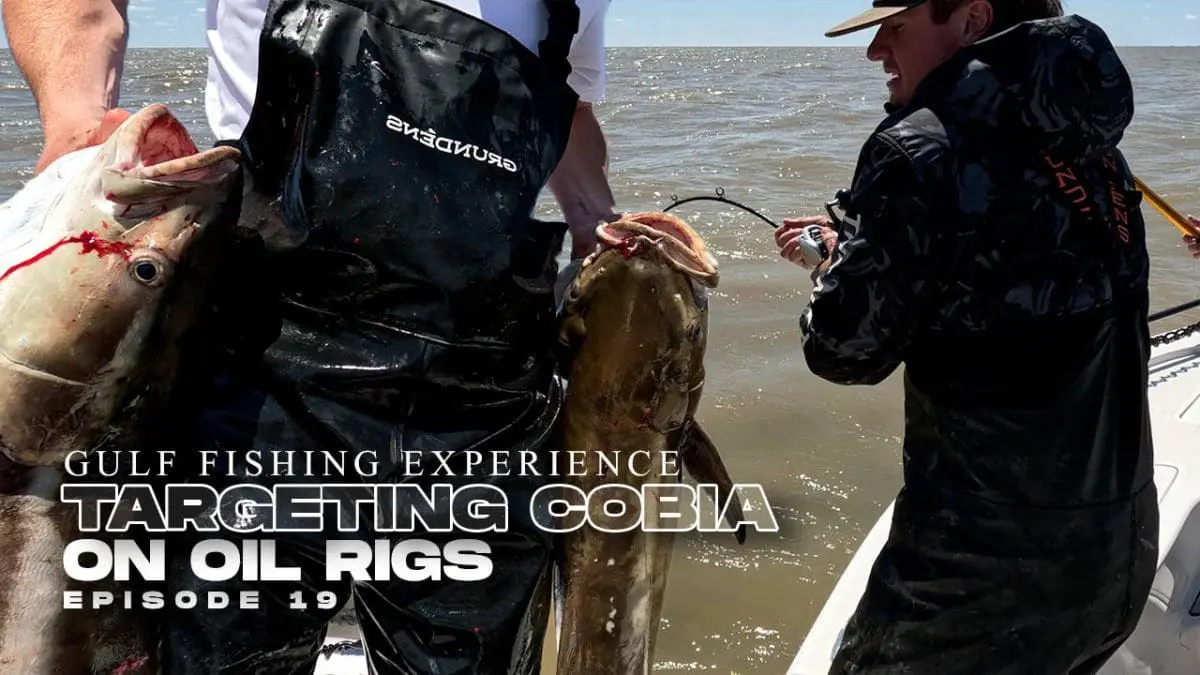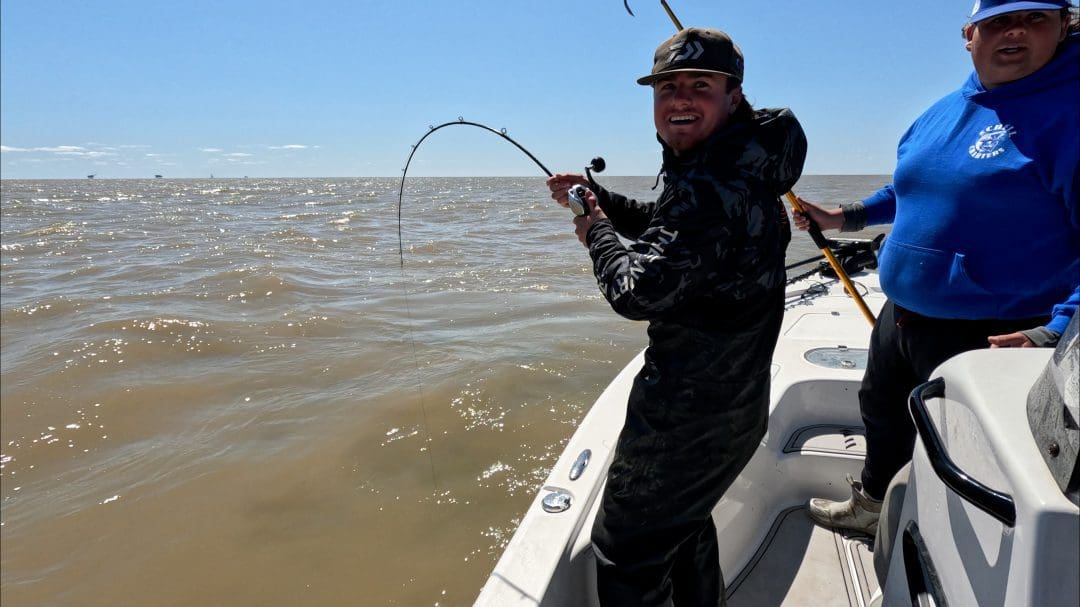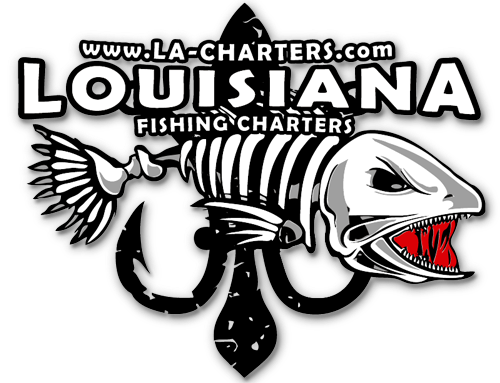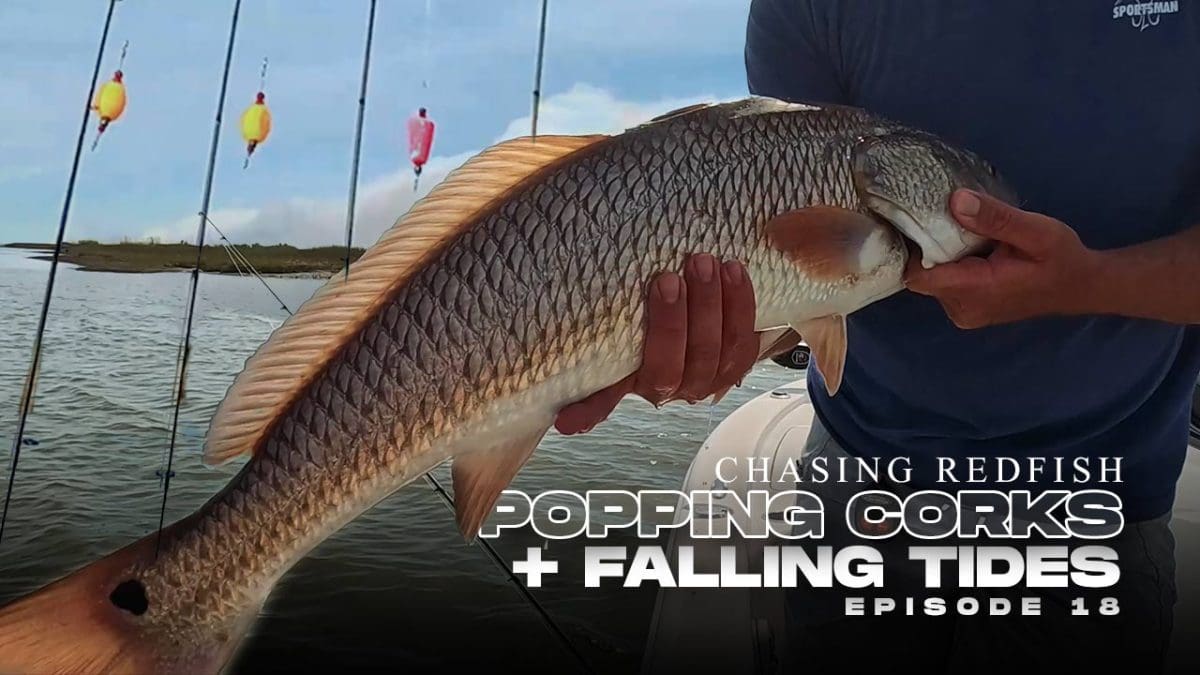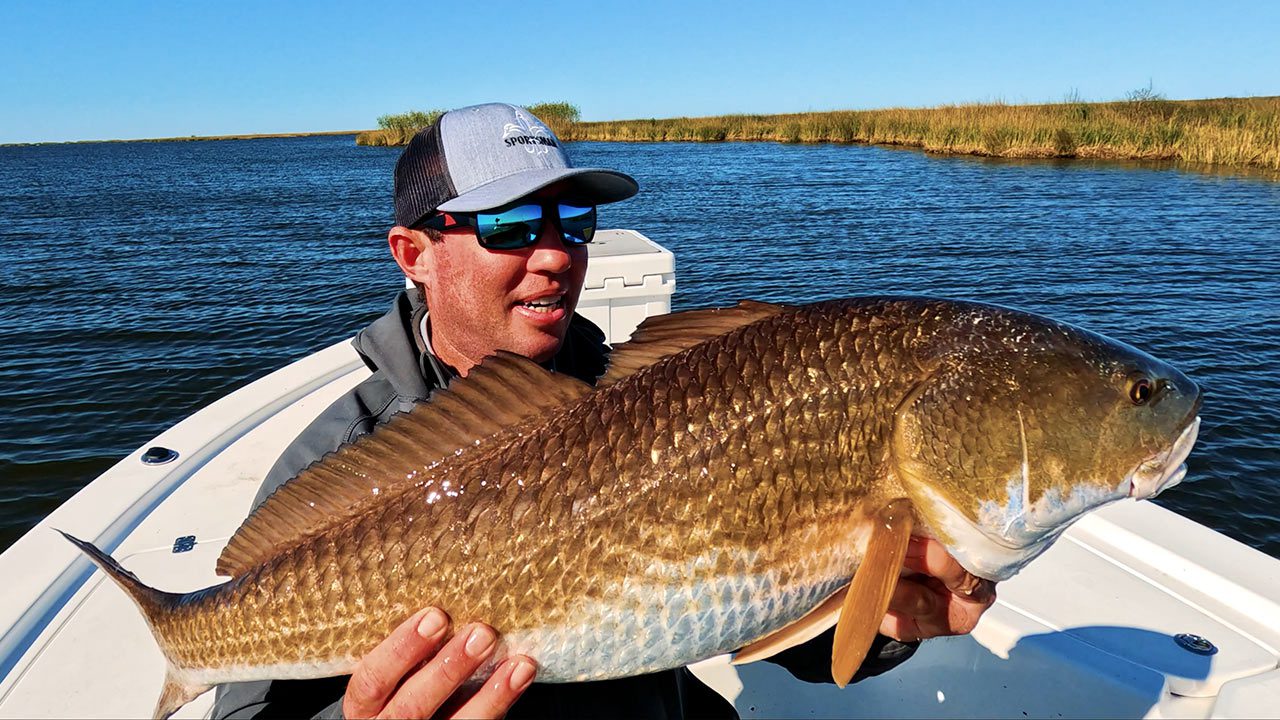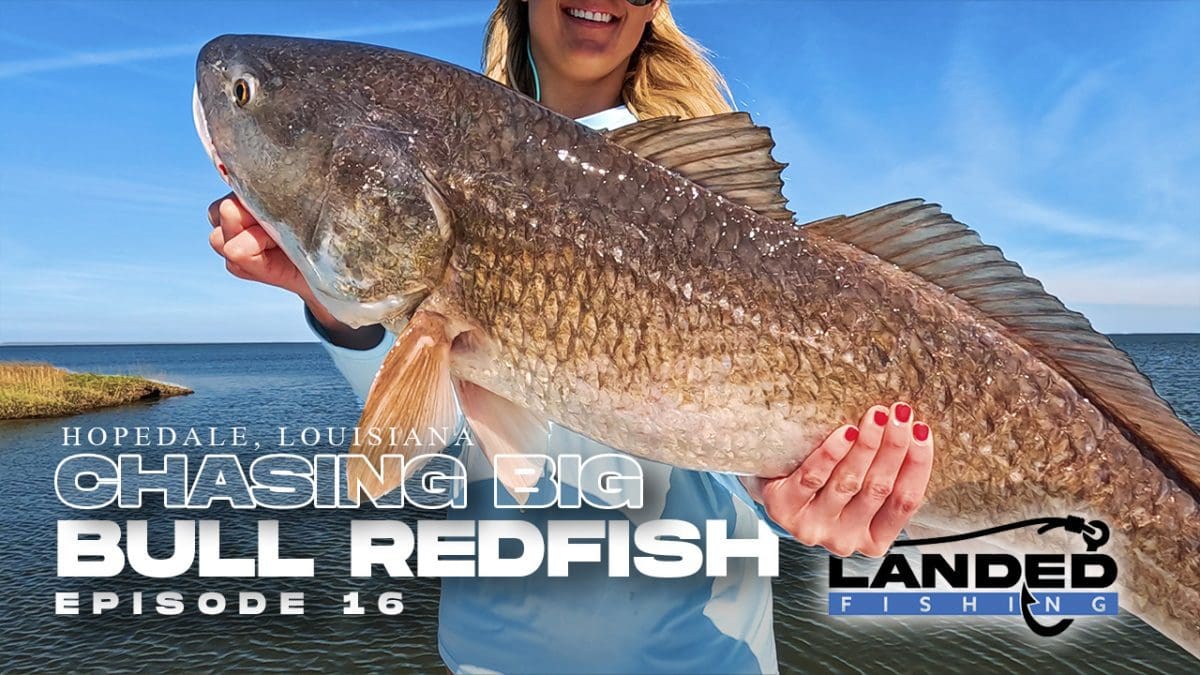Positioning for Redfish: Targeting Shallow Water Structure
Redfish and black drum are two of the most sought-after game fish in coastal waters. Both species are known for their hard-fighting nature and delicious flesh, making them popular targets for anglers of all skill levels.
Watch EP24: Cast Placement Redfish & Drum
Catching Redfish and Black Drum
However, catching drum can be challenging, as they are often found in very specific areas and require precise presentation. In this article, we’ll discuss how to position yourself to catch redfish and black drum, with a focus on the different strategies required for each species.
Presenting Bait to Redfish
Approaching Quietly and Anchoring Strategically
Redfish are often found in shallow water, close to the bank. They are known for their preference for areas with structure, such as oyster bars, mangroves, and grass beds.
Choosing the Right Bait or Redfish Lure for Success
Another key to catching redfish is to use the right bait or lure. Live or cut bait, such as shrimp or mullet, is a popular choice, as redfish are opportunistic feeders and will often take whatever is available.
Artificial lures such as soft plastics, spoons, and topwater plugs can also be effective, especially when the fish are active and feeding on the surface.
Positioning to Catch More Fish
When targeting redfish, it is important to position your boat in such a way that you can present your bait or lure as close to the bank as possible, without spooking the fish. This can be challenging, as redfish can be very sensitive to boat noise and movement.
A good strategy is to approach the area slowly, with the trolling motor or push pole, and then anchor or stake out the boat once you are within casting distance of the fish. This will allow you to make accurate casts and keep your bait in the strike zone for longer periods of time.
Positioning for Black Drum: Finding the Right Depth and Current
Black drum, on the other hand, are typically found in deeper water, a boat length from the shore. They are often found around structure such as docks, bridges, and jetties, and can be caught using similar tactics as redfish. However, because they are found in deeper water, it can be more challenging to get your bait or lure in front of them.
One strategy is to use a longer leader and properly sized jig head, which allows you to present your bait near the bottom where black drum are often found. Fishing rigs this way with your weight, leader, and hook, can be used with a variety of baits, including live or cut bait, as well as artificial lures.
Reading the Water: Understanding Your Surroundings While Fishing
As any experienced angler will tell you, understanding the water you’re fishing in is often critical to success. Knowing how to “read” the water can help you identify where fish are likely to be feeding, the best places to cast your line, and the right lures or bait to use.
Let’s explore some key things to look for when reading the water, and provide examples of situations where this skill can come in handy.
Currents and Eddies
Currents and eddies are areas where water is flowing faster or slower than the surrounding water. These areas can be particularly productive for fishing, as they tend to concentrate food and create a natural feeding zone for fish. To identify currents and eddies, look for areas where the water appears to be moving differently than the surrounding water. This might include areas where the water is choppier or where there are visible swirls on the surface.
Rivers or streams, look for areas where the water is flowing over rocks or around bends in the river. These areas are likely to create eddies and currents that fish will be attracted to.
Structure and Cover
Fish are often drawn to areas with structure and cover, such as rocks, logs, or vegetation. These areas provide hiding places for prey and create an ambush point for predators. To identify structure and cover, look for changes in the water depth, such as drop-offs or underwater ledges. You can also look for areas where there is visible vegetation or debris on the surface.
For lakes or ponds, look for areas where there are underwater logs or rocks. These areas can be particularly productive for catching bass or other predator fish.
Water Clarity
The clarity of the water can also affect fishing success. In clear water, fish may be more wary of lures or bait, while in murky water, they may be more likely to strike at anything that appears to be food. To gauge water clarity, look at the water itself, as well as the reflection of the sky or surrounding landscape.
If you’re fishing in a saltwater estuary, pay attention to the clarity of the water. In clear water, you may need to use smaller lures or lighter line to avoid spooking fish.
Looking for Baitfish Activity
Finally, pay attention to the behavior of baitfish in the water. If you see schools of baitfish swimming near the surface or jumping out of the water, it’s a good sign that predator fish are nearby. Look for birds or other wildlife that may be feeding on the same baitfish, as this can indicate a hotspot for fishing.
If you’re fishing in the ocean, look for areas where seabirds are diving into the water. This can indicate a school of baitfish that is attracting predator fish like tuna or mackerel.
The ability to read the water is a key skill for any angler looking to improve their fishing success. By paying attention to currents, and clues the water gives up, you can identify the best places to cast your line and the right lures or bait to use.
Remember, every body of water is different, so take the time to observe and learn the unique characteristics of the water you’re fishing in. With practice and patience, you’ll soon be able to “read” the water like a pro.
Catching Black Drum: Fishing Rigs and Adjusting for Current Flow
When positioning your boat to catch black drum, it is important to pay attention to the tide and current. Black drum often congregate in areas where the current is strong, as it brings food to them. Look for areas where the current is moving quickly, such as around bridge pilings or inlets, and position your boat accordingly.
Once you have anchored or staked out your boat, make sure to adjust your bait or lure presentation to match the current flow. This will help ensure that your bait stays in the strike zone and increases your chances of catching a fish.
Tips for Success: Being Mindful of Habitat and Feeding Patterns for Redfish and Black Drum
Catching redfish and black drum requires a combination of skill, strategy, and patience. By positioning your boat in the right location and using the right bait or lure, you can increase your chances of success.
Whether you prefer to fish shallow waters for redfish or deeper waters for black drum, always remember to be mindful of the fish’s habitat and feeding patterns, and to approach the area quietly and with respect for the fish. With these tips in mind, you’ll be well on your way to catching more redfish and black drum on your next fishing trip.

